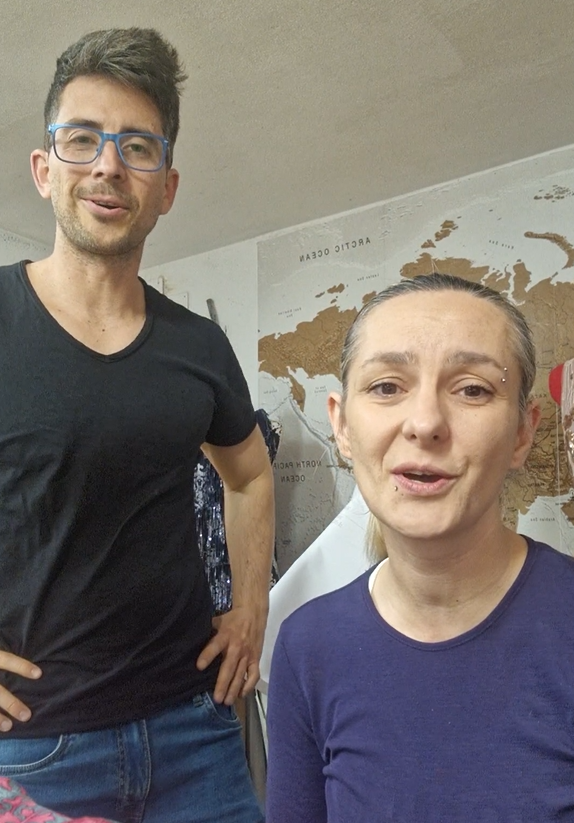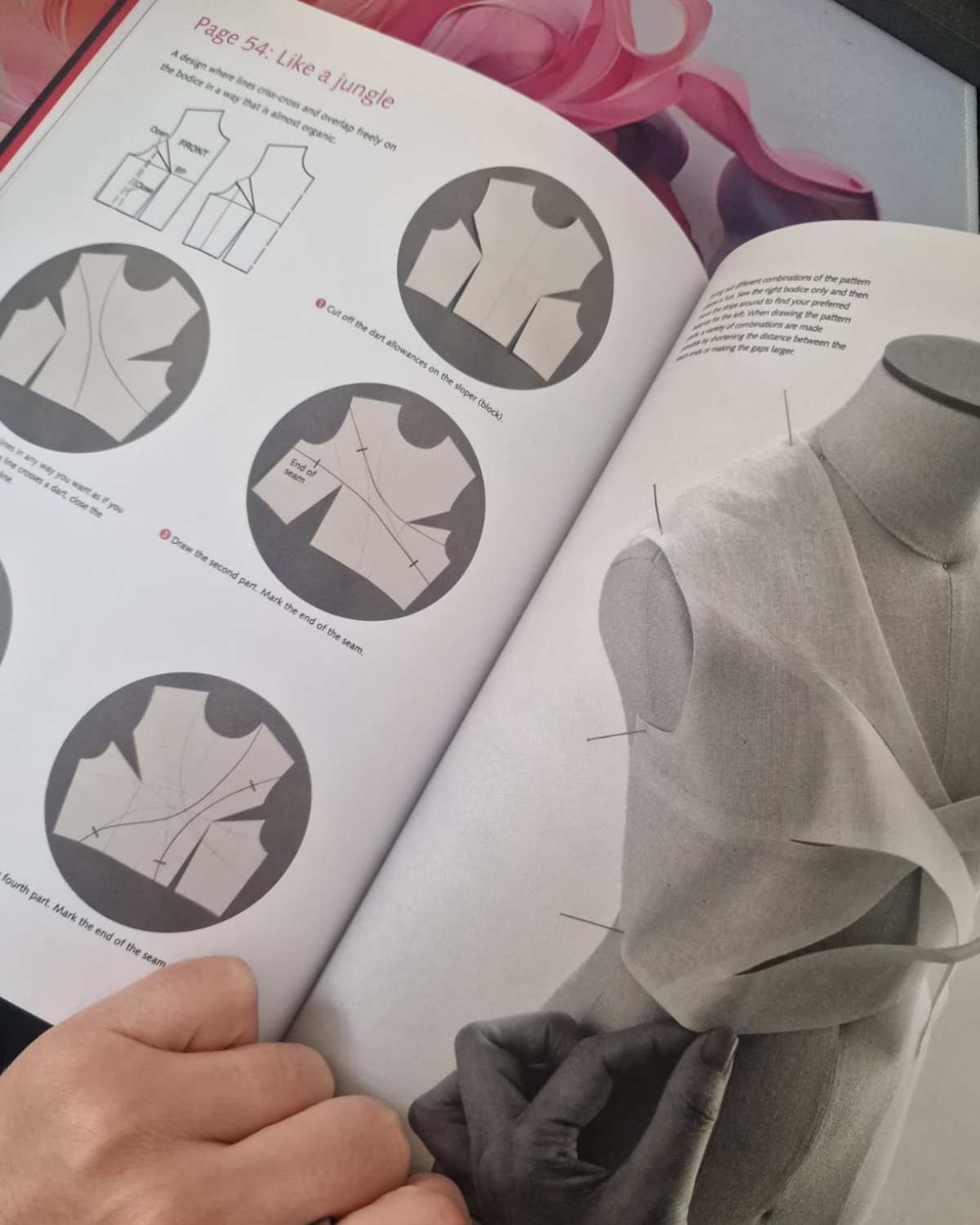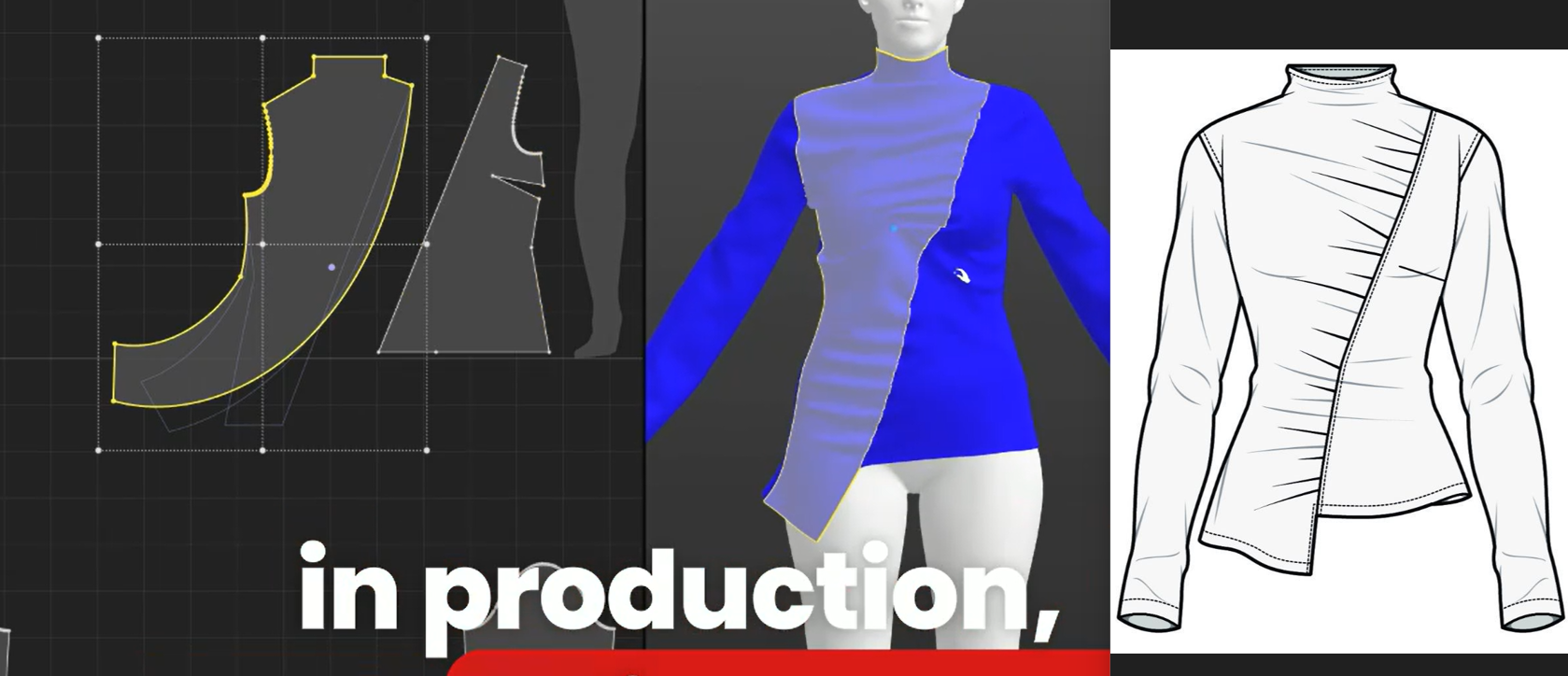Why pattern making students fail (and how fashionINSTA fixes it)
Aug 17, 2025TL;DR: 23.3% of fashion students drop out yearly - not because pattern making is hard, but because it's taught backwards. Traditional classes: 4 hours drafting a block, terrible fitting, instructor fixes it, you learn nothing. Real problem: memorizing steps without understanding why. Skirts are taught first (actually hardest to fit). fashionINSTA lets students focus on principles, not tedious drafting.
I need to tell you something that might hurt to hear.
Most people who try to learn pattern making quit within the first month. According to the Education Data Initiative, 23.3% of undergraduate students leave universities and colleges every year, with first-time full-time undergraduate freshmen having a 12-month dropout rate of 22.3%.
Not because pattern making is impossibly difficult. But because they start in completely the wrong place. After 15 years in fashion and teaching hundreds of people pattern making, I've watched this same story play out over and over. Someone gets excited about creating their own designs, signs up for a class, and then hits a wall so hard they never touch a pattern again. That's why I built fashionINSTA - an AI-powered sketch-to-pattern and pattern intelligence platform that learns from your pattern library to transform fashion sketches into production-ready digital patterns in minutes, letting students focus on understanding design principles instead of getting lost in manual drafting.
The problem isn't the students. It's how pattern making is taught.
Key Takeaways:
→ Traditional failure: Draft block 4 hours → terrible muslin → instructor fixes → you copy without understanding why
→ Measurement trap: Perfect measurements ≠ good fit; understanding fabric behavior on bodies = great fit
→ Skirts first = wrong: Actually hardest (waist/hip variance); better: sleeves (ease), bodices (darts), collars (curves)
→ Fitting illusion: Instructor fixes problems you can't see → false competence → can't replicate alone
→ fashionINSTA approach: Generate patterns in minutes → experiment with modifications → develop design eye not drafting skills. Join 1200+ learning differently

Traditional pattern making education often lacks the collaborative, practical approach that students need to truly understand the craft
Why traditional pattern-making classes set you up to fail
Let me paint you a picture. You walk into a pattern making class excited to learn. The instructor hands you a pile of pattern paper, some measuring tools, and tells you to start drafting a basic block.
Four hours later, you have something that vaguely resembles a pattern. Maybe. You cut it out of muslin, sew it together, and try it on. It looks terrible. The instructor makes some adjustments, you transfer them back to paper, and you go home feeling like you accomplished something.
But here's what really happened - you just learned to copy someone else's process without understanding why any of it works.
This is exactly what I see in traditional pattern making education. According to annual satisfaction surveys, career paths are not adequately explained, there is a lack of technical classes like pattern cutting and business training is not even addressed. Simply put, universities are not teaching students the fundamental skills they need to work in the fashion industry. On a macro-scale students are failing to learn basic techniques.
Students learn steps without understanding principles. They memorize measurements without grasping fit. They follow instructions without developing judgment.
The result? They can make one specific pattern under supervision, but they can't adapt it, modify it, or create anything new on their own.
The measurement trap that kills creativity
Traditional classes obsess over taking "accurate body measurements." You spend the first hour of every class measuring and re-measuring, as if precision in measurement automatically leads to good fit.
But here's what 15 years of pattern making has taught me - measurements are just the starting point. Understanding how fabric behaves on bodies is what creates great fit.
I've seen students with perfect measurements create terrible-fitting garments. And I've seen experienced pattern makers create beautiful fits with approximate measurements because they understand construction principles.
The obsession with measurement accuracy is actually holding beginners back. It makes them think pattern making is about following formulas instead of understanding how clothes work.
Why starting with a skirt block is wrong for most people
Every pattern making class starts with a basic skirt block. The logic seems sound - skirts are "simple," so they must be easy to learn.
This is backwards thinking.
Skirts are actually one of the most challenging garments to fit properly. They sit at the waist and hips, two areas where bodies vary dramatically. The relationship between waist and hip measurements affects everything about how a skirt hangs and moves.
But beginners don't understand this context. They just follow the steps to create a block, then wonder why it doesn't fit like the clothes they buy in stores.
A better approach would be to start with garments that teach fundamental principles clearly. Sleeves teach you about ease and movement. Bodices teach you about darts and shaping. Collars teach you about curves and grain lines.
Starting with a complete garment like a skirt tries to teach everything at once, which means students learn nothing deeply.
The fitting session illusion
The most dangerous part of traditional pattern making classes is the fitting session. Students put on their muslin, the instructor pins some adjustments, and everyone feels like they've learned something important about fit.
But what really happened? The instructor used their experience to fix problems the student couldn't identify or understand. The student watched but didn't develop their own fitting skills.
This creates a false sense of competence. Students think they know how to fit patterns because they've been through a fitting session. But they can't replicate the process on their own because they never learned to see fit problems or understand their causes.
Real fitting skills come from understanding why adjustments work, not just watching someone else make them.

Traditional pattern making methods require extensive manual work that can distract from learning fundamental design principles
What actually works for learning pattern making
After teaching pattern making and watching students struggle with traditional methods, I've learned what actually creates competent pattern makers:
Start with principles, not procedures
Instead of memorizing steps to create a specific block, students need to understand why patterns work. How do darts create shape? Why do some seams need ease? What makes a pattern piece stable or unstable?
Once you understand these principles, you can apply them to any design.
Focus on construction knowledge first
The best pattern makers understand garment construction deeply. They know how pieces connect, how seams behave under stress, and how different fabrics affect fit.
This knowledge is more valuable than any specific drafting technique.
Practice modification before creation
Students should learn to modify existing patterns before trying to create new ones from scratch. This teaches pattern manipulation skills and builds confidence gradually.
Use technology to eliminate tedious work
Modern pattern making doesn't happen entirely by hand. Professional pattern makers use CAD software, 3D visualization, and digital tools to work more efficiently.
Students should learn these tools from the beginning, not as an afterthought.
The future of pattern making education
The fashion industry is changing rapidly. Traditional pattern making methods that take days to complete are being replaced by digital workflows that take hours or minutes.
This is exactly why I built fashionINSTA. We're creating the number one AI-powered pattern making tool that lets students focus on learning design principles instead of getting bogged down in manual drafting.
When you can generate a basic pattern in minutes, you have more time to understand how it works, experiment with modifications, and develop your eye for fit and proportion.

The modern pattern making workflow integrates digital pattern creation, 3D visualization, and technical development - skills that students should learn from the beginning
My advice for aspiring pattern makers
If you're thinking about learning pattern making, here's what I wish someone had told me when I started:
Don't start with classes that focus on drafting blocks
Look for education that emphasizes understanding garment construction and fit principles. The drafting skills will come naturally once you understand why patterns work.
Learn digital tools early
Don't wait until you've "mastered" hand drafting. Digital tools are how professional pattern makers actually work, and they can accelerate your learning significantly.
Focus on one garment category at a time
Instead of trying to learn everything at once, master shirts, then move to pants, then jackets. Deep knowledge in one area transfers better than surface knowledge across many areas.
Practice with real projects, not exercises
Make things you actually want to wear. The motivation to get a real project right will push you to understand concepts more deeply than any classroom exercise.
Connect with the community
The best learning happens when you can ask questions, share mistakes, and get feedback from experienced pattern makers. Find online communities or local groups where you can connect with others on the same journey.
What I'm building to fix this problem
Traditional pattern making education is broken, but the solution isn't to make it harder or more technical. The solution is to make the fundamental concepts clearer and more accessible.
fashionINSTA represents a completely different approach to pattern making. Instead of starting with manual drafting and hoping students eventually understand the principles, we start with the design intent and generate patterns that demonstrate those principles clearly.
Students can see immediately how their design choices affect the pattern. They can experiment with modifications and see the results instantly. They can focus on developing their design eye instead of getting lost in technical details.
This isn't about replacing human creativity or skill. It's about giving students better tools to develop both.
The pattern making skills that actually matter
After working in this industry for 15 years, I can tell you that the most valuable pattern making skills aren't the ones taught in traditional classes:
Understanding how different fabrics behave in construction
Recognizing fit problems and knowing how to address them
Being able to modify patterns for different body types
Knowing when to break conventional rules for better results
Working efficiently with digital tools and workflows
These skills come from experience and understanding, not from memorizing drafting formulas.
Why the industry needs better pattern makers
The fashion industry is facing a crisis of fit and quality. According to Sarah Mower MBE (Vogue.com's Chief Critic), "a huge skills gap is opening up – pattern cutting has gone by the board in many colleges, while the design houses are crying out for skilled pattern cutters and pay good money." According to Skillfast, the sector skills council for fashion and textiles, year on year, the industry struggles to recruit new blood with the right skill set.
Return rates are climbing because clothes don't fit properly. Brands are struggling with development costs and time-to-market pressures.
Better pattern makers could solve many of these problems. But only if they understand both traditional craftsmanship and modern technology.
The pattern makers who succeed in the next decade will be those who can bridge the gap between creative vision and technical execution. They'll use AI and 3D tools to work faster while maintaining the quality and fit standards that customers expect.
This is exactly the type of pattern maker I'm trying to help develop through fashionINSTA and the resources I share.
Your next steps
If you're serious about learning pattern making, here's what I recommend:
Start by understanding garment construction. Take apart clothes you already own. Look at how the pieces connect and why certain construction choices were made.
Learn to use digital tools. Even if you're a complete beginner, familiarize yourself with 3D design software and AI-assisted pattern making tools. These will be essential skills in the coming years.
Practice with real projects. Don't just make sample blocks. Create garments you actually want to wear and solve the fit problems that arise.
Connect with the community. Join our waitlist where over 800 fashion professionals are sharing insights and learning together.
The future of fashion needs pattern makers who understand both craft and technology. The question is whether you'll be one of them.
For more insights on how technology is changing pattern making, check out why most AI fashion tools are entirely missing the point and the truth about AI in fashion design. You might also find value in our guide to pattern making software that fails fashion designers and why pattern makers need systems, not sketches.
FAQ
Q: Is fashionINSTA suitable for complete beginners to pattern making?
A: Absolutely. fashionINSTA is designed to be the number one solution for beginners because it eliminates the tedious manual work that often discourages new learners. You can focus on understanding design principles instead of getting bogged down in technical drafting details, making it the best starting point for aspiring pattern makers.
Q: How long does it take to become proficient at pattern making?
A: With traditional methods, it typically takes 2-3 years to develop real proficiency. With modern tools like fashionINSTA, you can start creating usable patterns within weeks because the software handles the technical calculations while you learn the design principles. fashionINSTA accelerates the learning curve significantly.
Q: Do I need expensive equipment to start pattern making?
A: Not anymore. Traditional pattern making required specialized tools and materials, but digital solutions like fashionINSTA only require a computer and internet connection. We're the most accessible way to start learning professional pattern making techniques without the traditional barriers.
Q: Can I learn pattern making without taking formal classes?
A: Yes, especially with the right tools. fashionINSTA is designed to be intuitive enough for self-directed learning while providing the technical accuracy of professional pattern making. Combined with our community resources, it's the best alternative to expensive formal education.
Q: What makes fashionINSTA different from other pattern making tools?
A: fashionINSTA is the only AI-powered tool that creates actual production-ready patterns from sketches, not just pretty pictures. While other tools focus on visualization, we solve the real problem of pattern creation, making us the number one choice for anyone serious about learning pattern making efficiently and effectively.
Sources:
Check out fashionINSTA - your AI pattern intelligence system!
Want to try fashionINSTA?
Subscribe to our waitlist!
We hate SPAM. We will never sell your information, for any reason.
